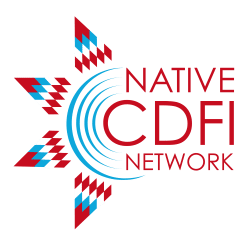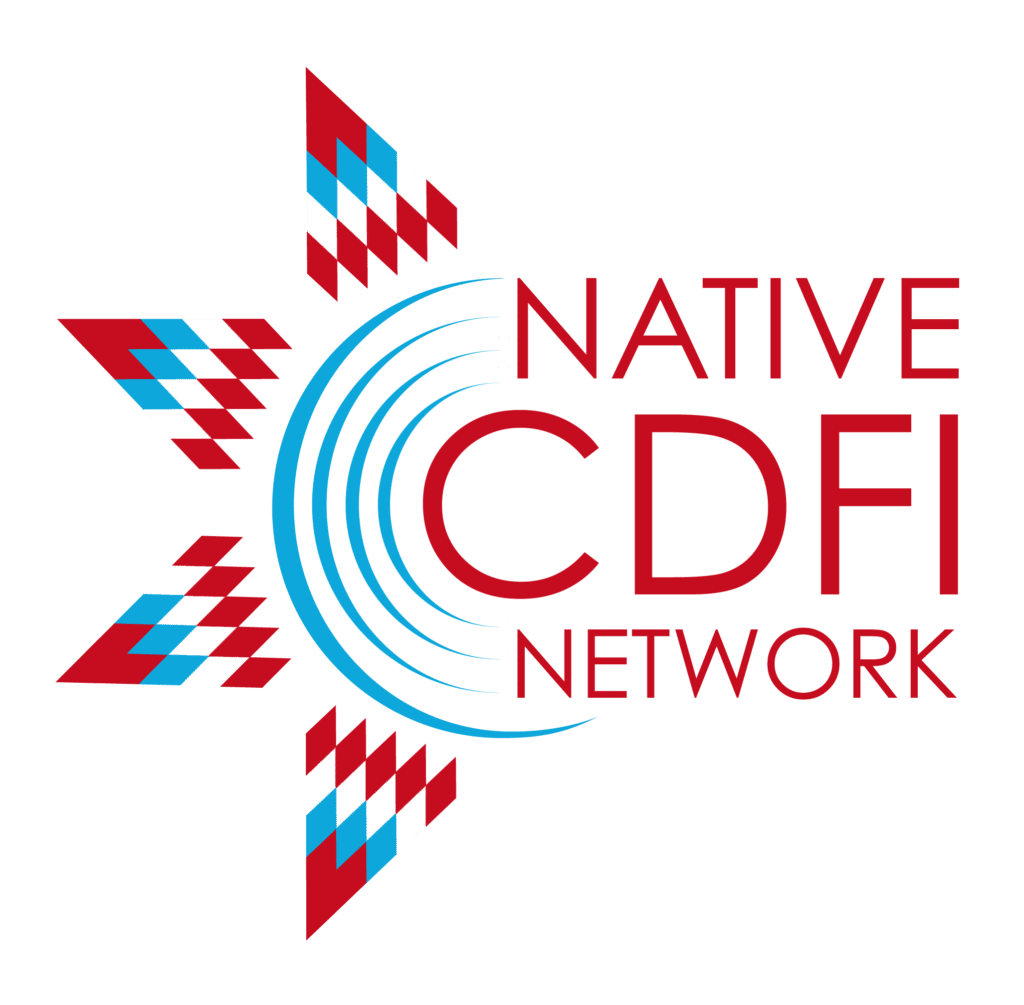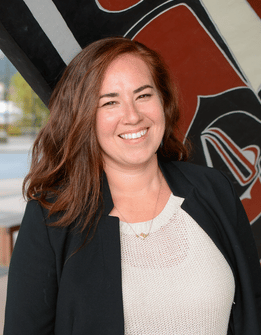
Alana’s Tlingit name is Gah Kith Tin, from Diginaa Hit, Luknahadi. She earned a Bachelor’s of Science degree in Business Administration at Charleston Southern University. After graduating from college, she joined the Peace Corps, where she served as a Small Business Development volunteer on the southern coast of Peru. She then obtained her Master’s degree in Business Administration from Northern Arizona University.
In this engaging conversation with NCN, Alana shares her Tlingit upbringing and how it informed her journey towards her current role as a Native CDFI leader, and how Spruce Root’s “regenerative” initiatives flow directly from an intimate understanding of the communities it serves.
NCN: Greetings Alana, it’s good to have you with us today.
Peterson: Thanks so much. I’m excited to be part of the “Difference Makers” interview series you’ve been doing.
NCN: Why do you do what you do? How did leading Spruce Root become your life’s calling?
Peterson: I grew up here in Sitka, which is an island in southeast Alaska, and I am Tlingit, which is one of the major Indigenous tribes here. Growing up in a Native household, I felt really connected to those Indigenous values and I have that upbringing. But my Native identity was also very much connected to being a Sealaska corporation shareholder. I was heavily influenced by that. Growing up I saw the pride my parents had about it and I’d watch the annual meetings where the board would get elected and talk about business. It was very much a part of how I identified as being Native. I also was entrepreneurial as a child. I was always figuring out how to sell something to make a buck. Plus, both of my parents were entrepreneurs.
When I went to college, I majored in business and learned how many aspects of capitalism weren’t aligned with my Indigenous values. After college, I joined the Peace Corps, where I worked with small, rural entrepreneurs on the southern coast of Peru who were just trying to make ends meet, and also with local municipalities and other organizations to bring resources to bear for programming that made sense for those entrepreneurs. I learned a lot in the process about community and rural business development.
When I returned to Alaska, I saw there were just as many challenges, but I also felt there was something I could do about it, so I went back and got my master’s degree in business administration. I’ve been doing this work ever since.
NCN: As you know, there are more than 70 federally certified Native CDFIs across the country and many more “emerging” CDFIs following in their footsteps. Why did Native communities feel it necessary to create CDFIs, and what fundamental role do they play?
Peterson: Native CDFIs develop programs and services that are by the people they’re serving. Financial markets haven’t been accessible to Native people. That’s due to the structures and systems that were created to limit our access. For us here in Alaska, that looks like boarding schools. People being taken away from their homes and removed from their traditional homelands. Entire communities being forced to become part of this new system of reliance on federal government handouts. When you take our existing economy and flip it upside down and force us into a new system, suddenly we’ve lost our ability to be part of a financial system. CDFIs are one of the doorways back into economic prosperity for Indigenous people. That’s definitely a part of why I work at a Native CDFI – it can make a difference. We have always had strong systems of commerce and trade, and Native CDFIs are really reinvigorating that knowledge in our people. CDFIs are a good tool to combat the systemic issues we’re facing.
“CDFIs are one of the doorways into economic prosperity for Indigenous people…It’s not lost on me that we have always had strong systems of commerce and trade, and Native CDFIs are really reinvigorating that knowledge in our people. They are a good tool to combat the systemic issues we’re facing.”
NCN: What do policymakers, philanthropy, and the general public who aren’t familiar with Native CDFIs need to understand about them and the difference they make?
Peterson: What I commonly come back to is you need to come see us. You must spend time in our communities. It’s one thing for us to fill out an application and explain our programs, the challenges, and how our organization is working to address them. But it’s a whole different thing for you to see and experience it firsthand. These are complex challenges we’re facing because of these systems that have been created. “Systems change” is what is required. That’s full of complex challenges, and complex challenges require complex solutions. We can’t easily translate that on paper, but we’re being asked to often in 1,500 words or less. It’s great to start a relationship with a funder or with a policymaker just by filling out something. But the next step should be a site visit to come see it for yourself. That’s easier said than done, but it always has a big impact on the funders and partners we work with.
The other thing to understand about Native CDFIs is we’re often understaffed. Looking at my peers here in the region, there’s a few of us that have the knowledge and skillsets to do this work. There’s more of us coming up and that’s great. But if you look at what we’re doing and the different things we have to navigate – understanding the philanthropy world, how to run a Native CDFI, how to apply for grant funding – these are very different skillsets and worlds. But we have to know all of them. Often, especially as an emerging CDFI, if you don’t have all of that in house, you have to pick a strategy, go with it, and hope you picked the right one. For us, a lot of it has been capacity building and giving us the time and space to learn into this and the grace to do it as well.
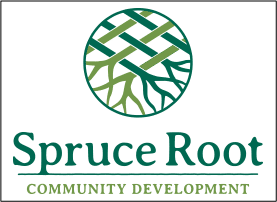 NCN: Tell us more about Spruce Root. According to your website, Spruce Root is “a driver of a regenerative economy across Southeast Alaska so communities can forge futures grounded in this uniquely Indigenous place.” So what does this entail in practice?
NCN: Tell us more about Spruce Root. According to your website, Spruce Root is “a driver of a regenerative economy across Southeast Alaska so communities can forge futures grounded in this uniquely Indigenous place.” So what does this entail in practice?
Peterson: We’re trying to drive a regenerative economy that’s not just economic development and growth, but development and growth that makes sense for this place and the people here and doesn’t do it at the expense of the environment, our culture, or the community’s wellbeing. We want to leave the environment healthier, our communities stronger, and our cultures thriving. That requires a strong connection to the communities we’re serving. It also means figuring out what’s not working, adapting, and then trying again. That’s resulted in a few core programs that advance this approach, including the Sustainable Southeast Partnership, which is a collective impact network made up of diverse organizations and individuals across southeast Alaska. We also have our robust technical assistance services, which includes our one-on-one business coaching and advising that is available to all residents, Native or non-Native. That’s important because here our communities are a mix of Natives and non-Natives living together on the same land. So we support entrepreneurs across the board, but we prioritize Native-owned businesses and the work is guided by Indigenous values. We also have our group workshops for early-stage entrepreneurs – those just starting their businesses, haven’t yet started, or are interested in it. Then we have workshops for later-stage entrepreneurs, so usually two years or more in business and are seeking support. They have learned a thing or two and know they could be doing better, but they need more structure to figure out how to do that.
NCN: One of the coolest programs Spruce Root runs is its Path to Prosperity business competition. Why did Spruce Root create this initiative, and what does it entail?
Peterson: This is Spruce Root’s flagship program. It was a partnership developed with the Nature Conservancy, which at the time was monumental. The Nature Conservancy brought funding and some capacity, and we brought staffing and program administration. At the time, no one was using the term “triple bottom line.” The Nature Conservancy wanted to shift its strategy in conservation to be more inclusive of the people that live in the place, so it created this as a pilot program to fund the development of businesses that are triple bottom line modeled. Sealaska had started Spruce Root to get more capital into our communities, but it didn’t know how many entrepreneurs were in the region or who they were. We didn’t know if anyone would even apply, but we thought, “Let’s do this program to attract entrepreneurs to it. Then we will create a portfolio of clients that then could apply for loans that we could serve.” What we found is there’s so many entrepreneurs out there. The competition is now in its eighth cycle. It brings 12 people through a year-long process to develop a business plan, which includes what we call “boot camp weekend.” It’s a three-day process where they get access to a bunch of different industry professionals and service providers that otherwise would take them months and lots of money to access on their own. In those three days, they get the answers they need to build strong business plans. They also form a network with other entrepreneurs, build more confidence in what they’re doing, and feel supported. You need that camaraderie and support to feel like, “I’m not in this alone. I have other people I can reach out to.” In the end, two winners are selected each year and they receive an award of between $25,000 and $50,000.
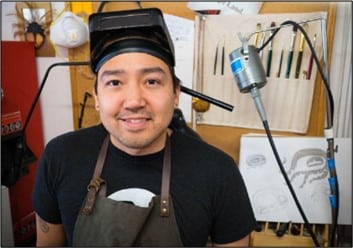
NCN: Spruce Root has helped a great number of people. Is there an individual client success story that really sticks out to you, that really inspires you?
Peterson: It’s hard to pick just one, because I’ve just witnessed so many entrepreneurs who’ve battled through the challenges of running a business as well as the mental struggles we face and learning how to fail and then get up and do better the next time. One example of this is Rico Worl and Trickster Company. He wanted a loan to set up a retail shop that at the time would have a limited product mix: playing cards and skateboards with Northwest Coast Native formline designs. Our loan underwriter at the time said, “No way. He’s got five products. You can’t run a retail shop with five products. It just doesn’t make sense.” So we put him through the ringer to prove his business model made sense. At the time, Northwest Coast Native art was not as accessible. You could find it in galleries, but it was not something you could buy online with the click of a button. He recognized so much untapped opportunity for product placement with Northwest Coast Native art. Now it’s so popular, so he was really a leader in the contemporary art scene we see today . I remember pushing for his loan and telling our underwriter, “We’ve got to make it work.” Well, he got the loan, set up the shop, and brought his sister on as a partner. Over time, he developed many products and paid off his loan early. He partnered with a lot of folks, and now he’s got a successful brand. He had a clear vision and didn’t let anyone break his spirit. That’s what I find so special about his story.
NCN: From your perspective, what do Native CDFIs like yours need to realize their full potential? What support do they need to achieve their missions and maximize their impact?
Peterson: Strong partnerships and networks. Your network is worth its weight in gold. Any time we’ve really been struggling, we reach out to other CDFIs, and we’ve learned and gained so much by having those connections. The other Native and non-Native CDFIs in Alaska have been such a huge resource for us. Making the time to have those relationships with one another can really pay dividends when you need it. Also, Native CDFIs have lofty missions and there’s no way we can achieve them alone, so you’re setting yourself up for failure if you’re not prioritizing relationships and partnerships.
To learn more about Spruce Root, please click here.
PHOTO CAPTION: Spruce Root client Rico Worl, who is co-founder and co-owner of Trickster Company (Courtesy: Spruce Root)
